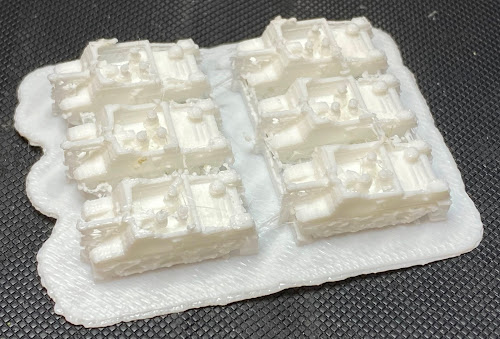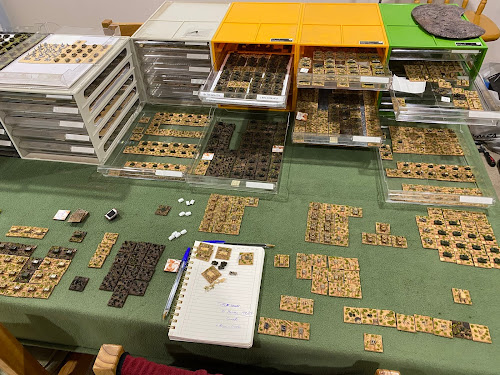The organising of the British Armoured Divisions for Spearhead continued. The nice thing about having a 3D printer was that when I found I needed some models, I could just print them if the STL files were available. Most of the files I was able to get for free from Thingiverse.
 |
| Allied Sexton Self-Propelled Guns |
Here are some that I printed. The files are free. There is a huge collection made by m_bergmann on Thingiverse. The files were designed for 1:200 scale but are easily resized to 1:285. Reduced to this scale a couple might need the barrels enlarged, but surprisingly few.
I accidentally printed the first couple a 1:385 and was amazed they were still recognisable and printed fine!
A resin printer would no doubt be better, but with even with the standard 0.4mm nozzle on my nifty Flashforge Creator Pro filament printer the results are surprisingly good.
 |
| Sextons removed from the raft and cleaned up |
The great thing was that I made a list of missing vehicles as I was re-organising. Then I just set the printer going without having to wait for the models to turn up a week or a month later. 3D printing can be quite slow, especially as these need to run in high quality mode, but leave it running overnight and you have a set of models ready for you in the morning.
Here is a shot of the slicer for a group of 16 Sherman V tanks printed as separate body and turret on a raft. In the top right corner of the picture you can see it will take 7 hours 45 minutes to print all these at high resolution. Roughly 30 minutes per model.
It is important to take care when separating the barrels from the supports.
 |
| Sherman Vs ready for the paint shop |



